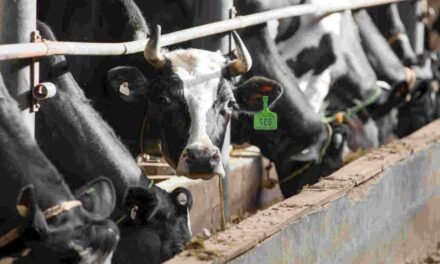In the recent past, the export of meat products has increased at an annual rate of about 30%. With surplus income and changing lifestyle convenience meat products have potential in Indian market, write M. Muthukuamr, B.M. Naveena and A.R. Sen
Indian meat industry has emerged as the most dynamic and rapidly expanding segment of our livestock economy. Its production is registered 5.3 million tonnes with a recent export of 0.61 million tonnes fetching about Rs.2900 cores foreign exchange. In the recent past, the export of meat products has increased at an annual rate of about 30%. With surplus income and changing lifestyle convenience meat products have potential in our domestic market.
Table of Contents
Convenience Meat Products
The convenience meat products are ready-to-cook or ready-to-serve meat products that require minimal preparation in the kitchen, are easy to handle, and quick to serve. There are a variety of such products, e.g., cooked/uncooked, comminuted/uncomminuted, flaked, reformed, as well as fermented, cured, smoked, enrobed, and canned. Most of these products undergo a combination of processes such as grinding, chopping, seasoning, color alteration, or heat treatment before reaching their final form. The processing of food is an ever-evolving technique. The advancement of science and technology has led to the improvement of older processes and the introduction of new methods, as seen in recent trends in food processing.
Development of minced/emulsion-type products has been considered a potential solution for the utilization of meat from spent birds and animals (breeder stock). Avoiding unnecessary wastage of valuable commodities can be achieved by processing them into value-added convenience products. Mincing and mixing with non-meat ingredients not only eliminate toughness problems but also improve palatability and variety. Additionally, the economic pressure to minimize cost and maximize meat utilization has incentivized the creation of customer-oriented convenience meat products. With improvements in post-harvest distribution and processing facilities, there is greater potential for both domestic and export trade in this perishable commodity.
Domestic Marketing for Meat Products
Currently, less than 2% of meat production in India is commercially processed, compared to 30% in developed nations. Consumers in the middle and lower-income groups predominantly prefer fresh meat rather than chilled or frozen products. Additionally, in India, meat is often reserved for main meals rather than being consumed as a snack food. The processed meat sector remains in its infancy due to factors such as a lack of popularity, inadequate processing and cold chain facilities, poor quality control, and an unorganized marketing and distribution network for ready-made meat products.
However, rapid socio-economic changes, evolving food habits, an increasing working women force, and the rise of nuclear families are creating new opportunities for processed and ready-to-eat meat products. Exposure to such products through media and the expansion of multinational fast-food chains such as McDonald’s, KFC, and Domino’s, alongside local companies like Venkateshwara Hatcheries and Al-Kabeer Exports, has created a favorable atmosphere for value-added products.
The rise of supermarkets displaying these products further enhances their accessibility. Companies like Venky’s have already opened retail outlets across metro cities and busy areas, improving domestic marketing efforts.
Upcoming supermarket stores that display the products in a retail outlet chain can make these convenience meat products popular. Recently Venky’s have opened their retail outlets in and around metro cities including exhibition areas and other busy parts of cities around the country.
Export Potential for Meat Products
India’s contribution to global meat product exports is minimal, amounting to less than 2%. The processed meat sector needs modernization to compete with countries like China and Malaysia, which have upgraded their facilities and export to developed nations. Efforts like disease surveillance, export-oriented processing units, and the establishment of disease-free zones can significantly boost India’s export potential. Measures such as liberalization and promotional efforts are already enhancing exports, but more comprehensive strategies need to be employed, as highlighted by global food export trends.
Major Constraints
Despite some progress, convenience meat production faces significant challenges. These include the dominance of fresh and frozen meat production over convenience products, conventional dietary habits, regional taste preferences, inadequate advertising, and a lack of quality assurance programs. Additionally, consumers remain unaware of product availability, cooking methods, and the benefits of processed products.
Another major bottleneck is the high price of processed meat products and the lack of suitable indigenous processing equipment for small- and medium-scale units. To overcome these hurdles, it is essential to enhance the cold chain infrastructure and launch effective marketing campaigns to increase awareness about the availability and benefits of processed meat.
Future Prospects and Thrusts
India’s vast livestock reservoir presents significant potential for increasing the production of processed meat products. However, the current slaughter rates—40.74% for goats and 32.83% for sheep—are much lower compared to developed countries, where these rates exceed 70%. Similarly, bovine slaughter rates in India are less than 10%, compared to an average of 35% in other countries. Addressing these disparities and increasing the availability of meat animals for slaughter could significantly boost the production of value-added products.
The processed meat industry primarily caters to urban populations, constituting about 30% of the total population, leaving a vast rural market untapped. Ensuring that value-added products are available in hygienic conditions in rural areas is critical. Additionally, targeted promotions and awareness campaigns can reshape consumer perceptions about processed foods, as seen in efforts to promote frozen meat products.
Convenient products that align with Indian palates should be developed, leveraging the country’s rich heritage of spices and cuisine to create unique variations. Reducing production costs through economic formulations and the use of vegetable binders and extenders can also make these products more affordable for the masses.
Furthermore, India must adopt GMP (Good Manufacturing Practices) and HACCP (Hazard Analysis Critical Control Point) systems across the entire production-to-processing chain to meet international sanitary and phyto-sanitary requirements. This will help address concerns related to pathogenic microflora, toxins, and residues, thereby improving export competitiveness.
Additionally, extensive R&D is needed to innovate in meat processing and establish patents for indigenous products like tandoori chicken and kofta, which hold immense export potential. India also needs to address the lack of specific legislation on geographical indications for such products, ensuring their unique identity and market value are preserved.
Conclusion
The growth of the meat processing industry in India will require significant investments in technology, processing equipment, and cold chain infrastructure. By addressing social and religious taboos and creating a favorable political environment, the sector can achieve hygienic meat production, robust processing, and enhanced export opportunities.
The future of convenience meat products in India looks promising as they gradually gain acceptance among consumers. The meat processing profession must actively engage with the public, media, and policymakers to promote awareness about the advantages of processed and convenience meat products. With a concerted effort to modernize the industry and adopt global best practices, India can transform its meat processing sector into a globally competitive industry.
‘Processed Food Industry’: The Voice of Food Processing Industry
Processed Food Industry (PFI) is a premier English-language monthly B2B publication (ISSN 09721649) headquartered in New Delhi, catering to the vibrant and ever-evolving food processing industry. While we don’t claim to be the largest or most widely read, our proud legacy of over 27 years—publishing continuously since 1997—has earned us the trust of industry professionals as a reliable source of insights and information.
If your goal is to tap into the booming Indian and South Asian markets to promote your equipment, technology, software, or consumables, PFI is your strategic partner. With our hybrid approach across print, web, and social media, we help you establish strong brand recognition rooted in market relevance. Backed by a team of top-tier technical writers, we’re ready to work closely with you and your customers to craft compelling content that drives results.
India and South Asia’s food industry is expanding rapidly, driven by efficiency and cutting-edge innovations. Don’t miss the opportunity to elevate your brand and engage with this dynamic market. Get our 2025 media kit to fine-tune your marketing strategy, increase your visibility, and convert potential customers into valuable conversations. Additionally, ask for a sample copy of our monthly magazine and experience the quality and relevance we deliver.
Let us help you define your role in the future of the food processing industry.

Have a news or topic to share with industry? Write to us editorial@pfionline.com















